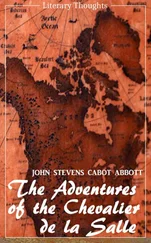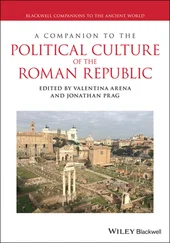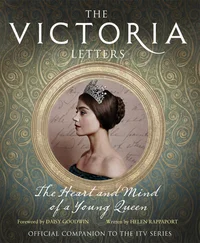A Companion to the Global Renaissance
Здесь есть возможность читать онлайн «A Companion to the Global Renaissance» — ознакомительный отрывок электронной книги совершенно бесплатно, а после прочтения отрывка купить полную версию. В некоторых случаях можно слушать аудио, скачать через торрент в формате fb2 и присутствует краткое содержание. Жанр: unrecognised, на английском языке. Описание произведения, (предисловие) а так же отзывы посетителей доступны на портале библиотеки ЛибКат.
- Название:A Companion to the Global Renaissance
- Автор:
- Жанр:
- Год:неизвестен
- ISBN:нет данных
- Рейтинг книги:5 / 5. Голосов: 1
-
Избранное:Добавить в избранное
- Отзывы:
-
Ваша оценка:
- 100
- 1
- 2
- 3
- 4
- 5
A Companion to the Global Renaissance: краткое содержание, описание и аннотация
Предлагаем к чтению аннотацию, описание, краткое содержание или предисловие (зависит от того, что написал сам автор книги «A Companion to the Global Renaissance»). Если вы не нашли необходимую информацию о книге — напишите в комментариях, мы постараемся отыскать её.
An innovative collection of original essays providing an expansive picture of globalization across the early modern world, now in its second edition A Companion to the Global Renaissance: Literature and Culture in the Era of Expansion, 1500–1700, Second Edition
Companion’s
A Companion to the Global Renaissance
cum
A Companion to the Global Renaissance: Literature and Culture in the Era of Expansion, 1500–1700, Second Edition
A Companion to the Global Renaissance — читать онлайн ознакомительный отрывок
Ниже представлен текст книги, разбитый по страницам. Система сохранения места последней прочитанной страницы, позволяет с удобством читать онлайн бесплатно книгу «A Companion to the Global Renaissance», без необходимости каждый раз заново искать на чём Вы остановились. Поставьте закладку, и сможете в любой момент перейти на страницу, на которой закончили чтение.
Интервал:
Закладка:
The more familiar image of Atlas carrying a globe on his shoulders has traditionally been assumed to have been the sign of Shakespeare’s Globe Theater. I’d like to let this myth pass unquestioned and to set up, for heuristic purposes, one of my own: as Shakespeare, like Mercator, authored a body of work with an illusory global vision, so Marlowe in the Tamburlaine plays alone offered a manifest projection of the world, an orbis terrarum , on the flat surface of his stage, with the distortions and omissions (fewer omissions than in Shakespeare) laid out for all to see. Atlas as global figure antedates both Mercator and Shakespeare. Lafreri famously printed a generic frontispiece depicting Atlas for one of his cartographic miscellanies contemporary with Ortelius’s 1570 volume, long before Mercator’s first edition appeared (Jacob, 68). But let it stand: Marlowe created an orbicular theater before Shakespeare fashioned a global one, just as Ortelius’s Theatrum preceded Mercator’s Atlas .
The orbicular theater of Ortelius and Marlowe has much in common with Heidegger’s concept of the modern world-picture. Ancient and medieval world-pictures did not exist. In concluding a rumination on the human being’s self-conscious assumption of a new, measuring position as subject, Heidegger remarks that “It is no wonder that humanism first arises where the world becomes picture” (133). Apparent claims about historical periodization by Heidegger are never simple. But on a certain level of argument, one could apply his comments to Tamburlaine’s assertive novelty as well as Pico della Mirandola’s oration on human dignity. Of course, the world-picture is “more than” a painting or image of the earth, although it may also be that; it is not “a picture of the world but the world conceived and grasped as picture” (129). The world is defined as “what is, in its entirety” and is set before the modern subject as a system to be understood by the subject, who thus, in the slang phrase, “gets the picture” or rather gets in the picture, to follow Heidegger’s idiom (129). Having bent Heidegger back toward the Renaissance, one might incline him in the other direction, toward our time, and say that globalization is precisely the conceiving and grasping of the world as a globe – or as a “flat earth” of systematic networking and exchange. Yet the return of the orbis terrarum in recent discourse about globalization also reminds us that such projections always distort according to the position of the mapmaker.
The world map and, more so, the encyclopedic system of the world map book bear a synecdochal relation to the world-picture as a manifestation of being in general under modernity, including early modernity. For instance, the impossibility of accurately representing the earth in its totality as either globe or projection, Christian Jacob’s asynoptic giganticism, is echoed in Heidegger’s concluding meditation on “the gigantic” in modern technology. The gigantic ultimately annihilates itself by shrinking the world by means of communication and through the infinite regress of the purely quantitative toward the increasingly small, as in “the numbers in atomic physics.” When gigantic quantities thus undo themselves, they convert to quality, what Heidegger calls a certain kind of greatness, and the calculable becomes incalculable, a shadow. “By means of this shadow,” Heidegger writes, “the modern world extends itself into a space withdrawn from representation” (135–136). The remarkable passage on the gigantic also suggests a way station between the Renaissance and Heidegger’s modernity, in the mathematical sublime of Kant’s Critique of Judgement . Sublimity proceeds from the subject’s mind when it pictures the world, as the imagination attests to its own vital role as well as reason’s power even as it fails to provide an adequate representation of a magnitude available only to reason (Kant, 106). It is hard to miss Heidegger’s debt to Kant. The earlier philosopher comments on the relative nature of size with the help of the telescope and the microscope, the instruments of Enlightenment physics, and thus relates the sublime not to gigantic objects, like “the earth’s diameter,” but to our failed imagination of ever larger objects, like the solar system and systems of other systems still, “which go by the name of nebulae.” By the time we reach, or fall short of, these shadowy realms, quantity has become quality (Kant, 97, 105, 108).
Kant serves as a midpoint between Marlowe and Heidegger in another manner, one that broaches the argument about representation and religion that follows. The failure to project or present the world or anything else, Kant asserts, creates a sublime “negative presentation” or gap in signification that is an end in itself and that also generates its own kind of sublimity when it is formalized:
Perhaps there is no more sublime passage in the Jewish law than the commandment: Thou shalt not make unto thee any graven image, or any likeness of any thing that is in heaven or on earth, or under the earth, &c. This commandment can alone explain the enthusiasm which the Jewish people, in their moral period, felt for their religion when comparing themselves with others, or the pride inspired by Mohammedanism.
(127)
Kant truncates the biblical passage, for the burden of the second commandment lies in its injunction not to bow down and worship such images (Exodus 20:4). In his emphasis on the prohibition of representation itself, as we shall see, the philosopher actually assimilates Judaism to what Europeans knew of Islamic belief. Cast as an afterthought in this passage though it is, the image of Islam has played a key role in debates about imagination and its limits in the European theater. I have come to questions about representation much wider than those raised by mapmaking. They call for an examination of Marlowe’s technique and its inaugural swerve from the biblical and classical traditions towards the greater global, or orbicular, scene of Islam. This is the movement of the Tamburlaine plays.
II Marlowe, Islam, and the Image
In turning toward Islam, I register a movement in early modern literary studies away from geography or ethnicity and toward religion as the principal category through which Europeans represented themselves and others during the period. Even as geo-ethnic categories of identity have been challenged, the methodology most associated with them, the study of images or representations of “the other,” has remained front and center. Superb scholarship has already been done on the representation of Islam in the English Renaissance, from Nabil Matar’s pathbreaking book Islam in Britain to Jonathan Burton’s Traffic and Turning: Islam and English Drama . So it is with some trepidation that I suggest Islam was not represented on the early modern English stage. Of course, as with studies of ethnicity, religious studies in the period take the failure of the image into account, especially in the case of the theater, for they are largely about misrepresentations in the sense of stereotypes and tendentious preconceptions, on and off stage. Islam may have been more profoundly misrepresented still, however, to the point of virtual absence despite the staging of putatively Muslim characters, beliefs, and rituals in a range of plays. How, in any case, can literature depict any religion as a category of identity? Is religion like ethnic or racial identity, or like the forms of belonging associated with realms, regions, or countries?
The question of misrepresentation is rendered more complex still by the way in which representation itself was at stake between Christianity and Islam in the world at large. What the art historian Terry Allen has termed “ aniconism , the nonuse of images” in Islamic culture was conditioned by theological beliefs (Allen, 20). Though dimly perceived and poorly understood by Christians, the avoidance of representation in Islam was, ironically, one of the few religious concepts to gain some measure of representation in nondramatic European writings on Muslims and the East. Monotheism, to which aniconism is intimately tied, and the importance of prophecy, prayer, and pilgrimage are others. Only rarely are these elements referred to in the drama of the period when it stages what purports to be Muslim belief and practice. Yet in Tamburlaine Parts I and II we do find a series of scenes that may have sprung from an abortive encounter with some traces of Islamic thought in medieval and early modern European learning.
Читать дальшеИнтервал:
Закладка:
Похожие книги на «A Companion to the Global Renaissance»
Представляем Вашему вниманию похожие книги на «A Companion to the Global Renaissance» списком для выбора. Мы отобрали схожую по названию и смыслу литературу в надежде предоставить читателям больше вариантов отыскать новые, интересные, ещё непрочитанные произведения.
Обсуждение, отзывы о книге «A Companion to the Global Renaissance» и просто собственные мнения читателей. Оставьте ваши комментарии, напишите, что Вы думаете о произведении, его смысле или главных героях. Укажите что конкретно понравилось, а что нет, и почему Вы так считаете.












